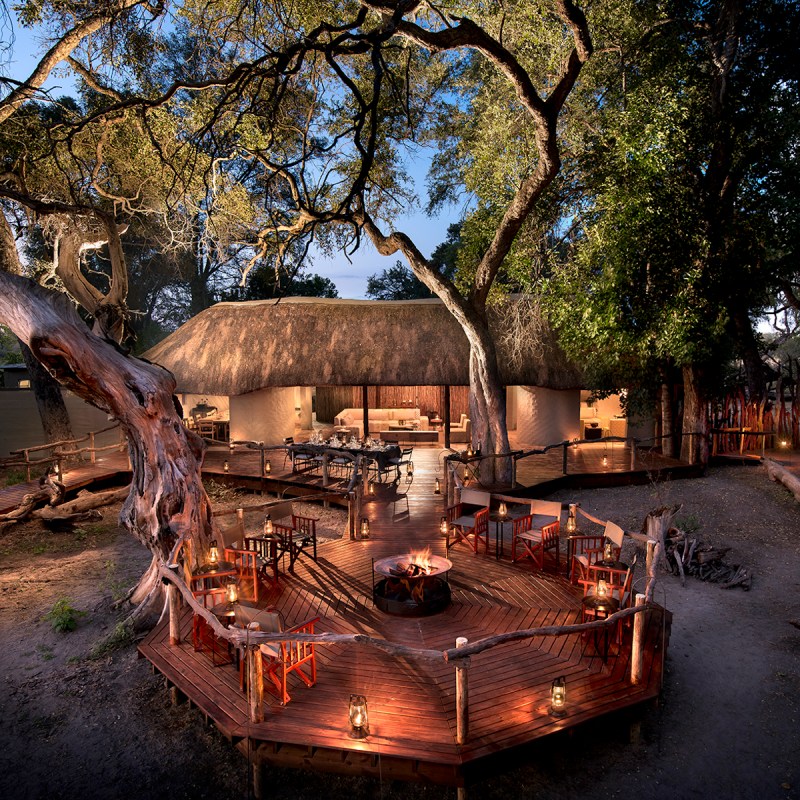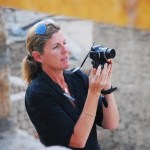
It’s the incredible and varied landscapes of Botswana’s parks and reserves that make this country such a fantastic and rewarding safari destination. In the North, there are the sparkling waterways and emerald floodplains of the Okavango Delta. Dominating the heart of the country is the Central Kalahari Game Reserve, a seldom visited but incredible sandy wilderness. Then there’s Chobe National Park — home to tens of thousands of elephants. I first visited Botswana when I was 21, on a budget overland camping trip. I loved it then and I love it now. As I’ve gotten older (much older), and visited more and more, Botswana has never disappointed.
Videos by TravelAwaits
Let me tell you a little more about this terrific destination, and give you a few tips to help you decide on the best places to go on your Botswana safari.
Also, if it’s your first time visiting the continent, be sure to check out the best destinations for first time visitors and the best safari parks to visit.

1. Chobe National Park
Chobe National Park is the second largest park in Botswana and covers four diverse ecosystems, from swamps to floodplains and woodlands to savannahs. The park is home to a wide array of wildlife and birds. But if there’s one thing that really draws the crowds here, it’s the elephants. Chobe boasts around 120,000 elephants, and in my opinion, they are best seen from the water on a sunset cruise. The park takes its name from the Chobe River, a beautiful river that forms the boundary between Botswana and Namibia — with the green wetlands on the Namibian bank contrasting with the dark waters of the river, and the sandbanks of Chobe National Park on the other.
Most people visiting Chobe will do so from Kasane, with its wide range of accommodation options and easy access on the eastern side of the park. Alternatively, Savuti, the very western corner of Chobe, is a year-round destination renowned for large concentrations of game, particularly for big cats (lions, leopards, and cheetahs).
Whilst not technically within Chobe National Park, the Linyanti Wildlife Reserve, located to the west of the park, is a private reserve which caters to the slightly more ‘well-heeled’ adventurous traveler. The concession covers some 308,000 acres, and is fed by the Kwando River, ensuring plenty of wildlife spotting opportunities, especially its many prides of lions. Without a doubt, the place to stay here is Linyanti Bush Camp, where on my last visit, we had lions pursuing buffalo through the camp in the middle of the night, and the same lions competing for the ‘romantic attention’ of a female the following day. It doesn’t really get much better than that!
The best time to visit Chobe is between May and September, when the weather is drier and cooler. Chobe is accessible by car which makes it a little less expensive than some of Botswana’s other parks. There’s a wide variety of accommodation available to suit all budgets.

2. Okavango Delta
The Okavango River cuts through the center of the Kalahari Desert, creating a unique inland water system that gives life to a huge variety of birds and animals. The Delta — declared the thousandth UNESCO world heritage site — forms where the Okavango River meets the Great Plains at the end of the Kalahari Desert. The Okavango, an oasis of islands, wildlife, and lush green vegetation in the middle of the unforgiving Kalahari desert, is the world’s largest inland delta. Every year the delta floods, covering over 6,175 square miles, and this huge expanse of water, studded with emerald-green islands and incredible wildlife, is a once-in-a-lifetime safari destination.
One of the most authentic ways to experience the Delta is by mokoro — a traditional canoe carved from a single large tree. Gliding down a river on a mokoro brings a sense of peace and relaxation little else can match. Plus, especially during peak flood season — which is ironically during the May-October dry season — wildlife is more concentrated on the islands, and from your mokoro, you have the perfect vantage point. It was on my first trip to Botswana that I took a three day mokoro trip into the Okavango Delta, and I loved every minute of it.
For more deserts to explore on your trip, visit these 10 unique African deserts.

3. Khwai Concession
Khwai is a 500,000-acre gem on the fringes of the Okavango Delta, sandwiched between Moremi Game Reserve and Chobe National Park. On our last visit there, we found both a hyena den and a wild dog den, both complete with babies — some incredibly special encounters that I will remember forever. Khwai is in fact one of the best places in Botswana to see wild dogs and other predators.
The Khwai Community Concession is owned and run by the local community, with camps and lodges renting the privilege of operating in this amazing place. This means that visitors coming here know that the community directly benefits from their tourist dollars — a concept vital for the survival of any conservation area.
African Bush Camps have two wonderful lodges here to choose from, and depending on your budget and desires, I’d recommend either or both!

4. Tsodilo Hills
Tsodilo Hills, a UNESCO World Heritage Site, appears almost suddenly out of the ground in northwest Kalahari. This is an outdoor art gallery, showcasing more than 4,000 ancient San Bushmen rock paintings, as well as shelters and caves. Over 4,500 cave drawings have been found in over 200 locations, depicting hunting scenes, dancing rituals, and wild animals. Some of the rock art dates back more than 30,000 years and archaeologists believe people have lived in the area for as long as 100,000 years. The San Bushmen believe this sacred area is the site of the creation of man and a resting place for spirits of the dead.
Visitors can expect to hike the three main hills with the assistance of local guides. The best time to visit is in the winter months, as summer can be blisteringly hot.

5. The Makgadikgadi Pans and Nxai Pan National Parks
The name may be a mouthful, but the place has a certain beauty that makes it well worth a visit. And the location, in northeastern Botswana, makes it easy to combine with a visit to Chobe and the Okavango Delta. At over 18,000 square miles, the Makgadikgadi Pans are the largest salt pans in the world. The salt-encrusted pans are flat and arid, and the skyline appears to go on forever. The Makgadikgadi Pans are the remains of a huge lake that dried up thousands of years ago. Wildlife is particularly varied in the dry season, when animals come from miles around to the Boteti River — the only source of water for a considerable distance.
Although technically part of Makgadikgadi Salt Pans, Nxai Pan National Park was created to extend the conservation area, and is a national park and wildlife reserve in its own right. Nxai Pan is 25 square miles of fossil lakebed, with wonderful sand dunes, towering baobab trees, and, of course, the salt pans themselves. During the rainy season from November to April, the lakebed becomes lush and green, playing host to an array of migrating wildlife. If possible, a trip to Nxai Pans should be combined with seeing the longest zebra migration in the world, which spans from Namibia to Nxai Pan, covering over 620 miles. The stylish bush camp Migration Expeditions is an ideal place to experience this.

6. Kgalagadi Transfrontier Park
Kgalagadi — the first Transfrontier Peace Park on the continent — is shared with Botswana and South Africa. Situated on 14,670 square miles of land, salt pans, sand dunes, and an array of wildlife during the rainy season, this is a wonderful park to visit during the summer months (January–April). Straddling the border between South Africa and Botswana, the park is not easy to get to, especially from the Botswana side. You’ll need a 4×4 and the ability to camp self-sufficiently.

7. Moremi Game Reserve
Voted the best game reserve on the African continent in 2008, Moremi has a lot going for itself. The reserve lies in the eastern Okavango Delta and borders Chobe National Park. This is the only officially protected part of the Okavango Delta (the reserve covers one third of the Okavango Delta). Small but perfectly formed, with a high density and variety of wildlife, Moremi is a haven for birdwatchers — with over 500 species to view. Wild dogs are regularly spotted here, as well as the Big Five, thanks to the re-introduction of both black and white rhinos.
July through October is the best time to visit. There are a number of campsites within the park, particularly sought after by self-drivers, and several lodges and camps can be found just outside the reserve. We had a fantastic, multi-generational camping trip here with family aged 18–75.

8. Central Kalahari Game Reserve
CKGR, as it is usually referred to, is a sandy wilderness punctuated by salt pans, fossilized river beds, and semi-arid grasslands, where black-maned lion and cheetahs stalk grazing herds of springbok and oryx. Wild and amazingly vast, the Central Kalahari Game Reserve is a wilderness of unfathomable open spaces. This is one of the most remote reserves in southern Africa. It is also the second largest reserve in the world; it’s as big as Belgium! CKGR was established in 1961 with the aim of providing the San people with a place to live and preserve their traditions and culture. A mobile safari is the best way to experience this magical place. Island Mobile Safaris runs a really memorable three day trip to CKGR.
People travel from around the world to visit this landlocked country, to see the undeniable beauty of the Okavango Delta, the vast and imposing Kalahari Desert, phenomenal wildlife sightings and knowledgeable guides, the rich history and peacefulness of the country, and of course, for the largest concentration of African elephants in the world. Botswana is a country with so much to offer. This is, without a doubt, a place that will live up to all of your pre-trip expectations.
Editor’s Note: Check out this list of books to read before your first trip to Africa.
